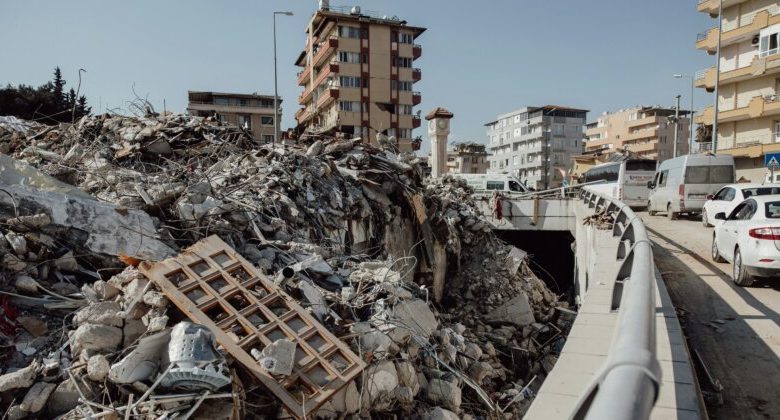Lessons from Recent Building Collapses

Structural failures have always been a reality, and they will likely persist unless past mistakes and design oversights are continuously considered, even as technology and engineering methods evolve. According to a study published in Case Studies in Construction Materials, 45% of the compiled building collapses occurred during construction or within the first year of completion.
Examining past failures helps to understand the nature of design flaws, exposing both the limitations of design and the impact of errors in judgment and reasoning on the design process. This article explores key reasons why structures collapse, the role of von Mises Stress in preventing these catastrophes and the lessons we should consider.
Common Causes of Structural Failures
- Design Flaws
Inadequate structural design can result in buildings unable to withstand expected loads. Errors in calculations, incorrect assumptions, or lack of consideration for specific environmental factors can lead to vulnerabilities.
- Poor Construction Practices
Substandard workmanship, use of inferior materials, or deviation from approved designs can compromise structural integrity. Ensuring adherence to quality standards during construction is vital.
- Foundation Failures
A weak or improperly designed foundation can lead to uneven settling, causing structural instability. Factors such as soil erosion, poor compaction, or inadequate waterproofing contribute to foundation issues.
- Lack of Maintenance
Over time, structures require regular maintenance to address wear and tear. Neglecting routine inspections and repairs can exacerbate minor issues, leading to significant failures.
- Environmental Factors
Natural disasters like earthquakes, floods, or hurricanes impose additional stresses on structures. Failure to design buildings to withstand such events can result in catastrophic collapses.

Case Studies of Famous Building Collapses
- Surfside Condominium Collapse, Florida (2021)
In June 2021, the Champlain Towers South condominium in Surfside, Florida, partially collapsed, resulting in 98 fatalities. Investigations revealed long-term degradation of reinforced concrete structural support due to water penetration and insufficient maintenance.
- Genoa Bridge Collapse (Italy, 2018)
The Morandi Bridge in Genoa, Italy, collapsed on August 14, 2018, killing 43 people. Investigations revealed that corrosion of the prestressed concrete stay cables, combined with a lack of redundancy in the structure, contributed to the failure
- Rana Plaza Collapse, Bangladesh (2013)
The Rana Plaza, an eight-story commercial building near Dhaka, Bangladesh, collapsed in April 2013, killing over 1,100 people. The building, initially designed for commercial use, had additional floors added illegally to accommodate garment factories, leading to structural overload.
- Big Blue Crane Collapse (USA, 1999)
The Big Blue Crane collapsed during the construction of Miller Park (now American Family Field) in Milwaukee, Wisconsin, on July 14, 1999. The accident occurred when the crane, lifting a 450-ton roof section, toppled due to high winds exceeding safety limits. The collapse resulted in the deaths of three workers.
- Hyatt Regency Walkway Collapse, Missouri (1981)
The Hyatt Regency hotel in Kansas City experienced a walkway collapse in July 1981, killing 114 people. The disaster was traced back to a change in the walkway’s design during construction, which doubled the load on certain connections, leading to their failure.
Lessons Learned
- Creating Reliable Structure and Predicting Stress: To ensure structural safety, engineers should use structural verification software like SDC Verifier for advanced stress analysis, including von Mises stress for yield prediction and additional tools for fatigue, fracture, and buckling assessments.
- Regular Inspections: Regular structural inspections can identify potential issues before they become critical. For example, the Champlain Towers collapse could have been prevented with timely intervention.
- Quality Control: Ensuring high-quality materials and adherence to engineering standards is crucial. The Rana Plaza collapse in Bangladesh (2013) was primarily due to illegal floor additions, lack of structural reinforcement, and overloading, leading to catastrophic failure.
- Adherence to Codes: Strict adherence to building codes is essential to preventing failures. For example, the Surfside Condominium collapse in Florida (2021) revealed longstanding code violations and maintenance deficiencies that contributed to the disaster.
- Maintenance: Proper maintenance is crucial for the longevity of structures. The Davenport building showed clear signs of neglect.
- Risk Assessment: Conducting thorough risk assessments, especially in areas prone to natural disasters, can mitigate potential failures.
How to Improve the Situation?
To reduce structural failures, engineers, contractors, and policymakers must prioritize safety, quality, and regular maintenance. Key measures include:
- Mandatory structural health monitoring for old and high-risk buildings.
- Strict enforcement of building codes to prevent unauthorized modifications.
- Public awareness on structural safety, including tenants and property owners.
By learning from past collapses and applying engineering best practices, the industry can work towards safer, more resilient structures.
Conclusion
By studying past collapses, engineers can gain valuable insights that help prevent future disasters. Implementing regular inspections, adhering to building codes, maintaining high construction standards, and using advanced structural verification tools, like von Mises stress analysis, are essential steps in ensuring the safety and longevity of structures. Ultimately, a commitment to continuous improvement, thorough risk assessments, and public awareness can significantly reduce the risk of catastrophic structural failures.




